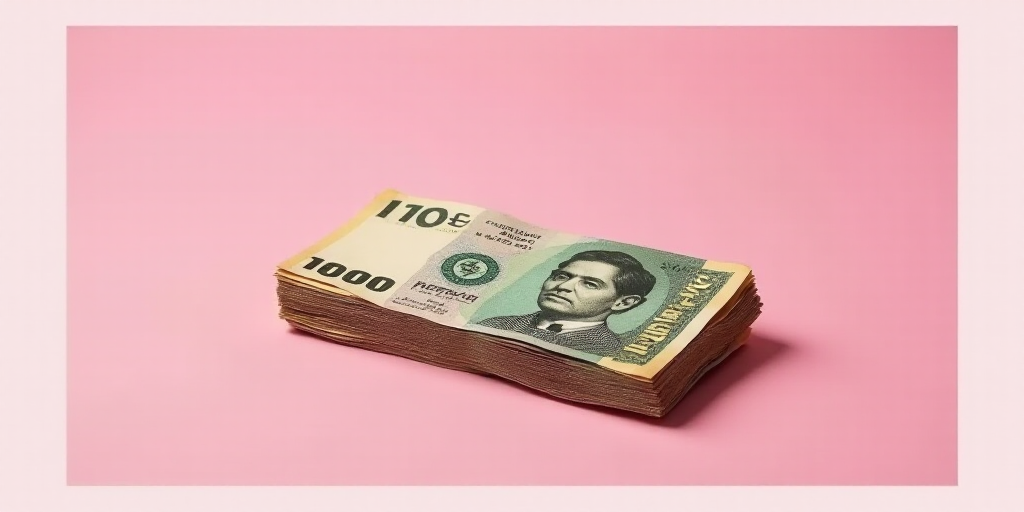The Rise of Cash and Its Implications
Mexicans prefer cash for their daily activities, such as buying bread, paying at the supermarket, filling up with gasoline, and bringing morning coffee to the office. This preference has led to various risks, including receiving counterfeit bills.
Every day, approximately 3.3 trillion pesos in bills and coins circulate on Mexico’s streets, which is 200% more than a decade ago, according to Banco de México (Banxico) data as of August. This demonstrates the high demand for cash in the country, despite increasing digitalization of the economy.
According to the National Survey of Financial Inclusion (ENIF), 73.5% of Mexicans use cash for transactions over 500 pesos, rising to 85.2% for amounts under that threshold.
Decline in Cash Transactions
Despite this trend, cash transactions have been decreasing in Mexico and are expected to continue doing so. In 2014, the percentage of cash transactions at point-of-sale was 76%, while in 2021 it dropped to 35% and is projected to fall to 31% by 2030, according to Gustavo Méndez, Deloitte’s Financial Services partner.
However, Méndez notes that the decline in cash usage in Mexico has occurred at a slower pace compared to countries like Colombia and Brazil.
The Most Counterfeited Bill
The surge in cash availability has opened the door for counterfeiters, who favor the 500-peso banknote. On average, from 2015 to the first half of this year, nearly 50% of detected fake bills were of this denomination. In 2024, the proportion reached its peak at 62%.
Over these 10.5 years, 1.51 million counterfeit 500-peso bills have been produced, totaling 758 million pesos. Additionally, 3.07 million counterfeit bills of all denominations (20, 50, 100, 500, and 1,000 pesos) have been detected, amounting to 1,039 million pesos.
On average, 292,317 counterfeit bills were detected annually. In 2022, the highest number was recorded at 350,828 bills.
Besides the 500-peso bill, the 200-peso and 100-peso denominations are also frequently counterfeited, averaging 26.2% and 15.8%, respectively.
Luisa, a shop owner with a stationery store, mentions that attempts to defraud using 500-peso bills are becoming increasingly common. “You get to know your customers, and suddenly strangers come in to buy a few items and pay with one of these bills. I check it carefully, and if it seems suspicious, I don’t accept it,” she says.
Alfredo, a cashier at a supermarket, recounts multiple instances where people have tried to pass counterfeit 200 and 500-peso bills. “We must check thoroughly, or they’ll charge us anyway,” he explains.
What to Do if You Receive a Counterfeit Bill
If you’ve encountered phrases like “I paid and was given a counterfeit bill” or “the ATM dispensed a fake bill,” and you’re unsure of the process to follow, the National Commission for the Protection and Defense of Users of Financial Services (Condusef) provides guidance.
If you receive a bill and doubt its authenticity or were told it’s counterfeit, visit any bank branch to request that your bill be sent to Banco de México for analysis. The branch will provide you with a receipt containing the bill’s details (denomination, serial number, series, and issuance date), your personal information (name, address, and phone number), and the branch’s details.
The receipt includes a folio number and date, which will allow you to track the analysis results issued by Banxico within a maximum of 20 business days from receipt.
If you withdrew a potentially counterfeit bill from an ATM, visit any branch of the institution within five business days to file a complaint. The institution must provide you with a claim form, where you’ll note your name and address, the location, date, and manner of receiving the bills, along with their characteristics and numbers. Attach a copy of an official identification document to the form.
The bank will retain the bills and issue you a receipt, subsequently sending them to Banco de México for examination.
If the information you provided and verification results suggest the bills were dispensed from the institution’s ATM, you’ll receive the bill amount if they originate from a maximum of two separate transactions. However, if you believe otherwise, the bank must inform you in writing about their reasons.






